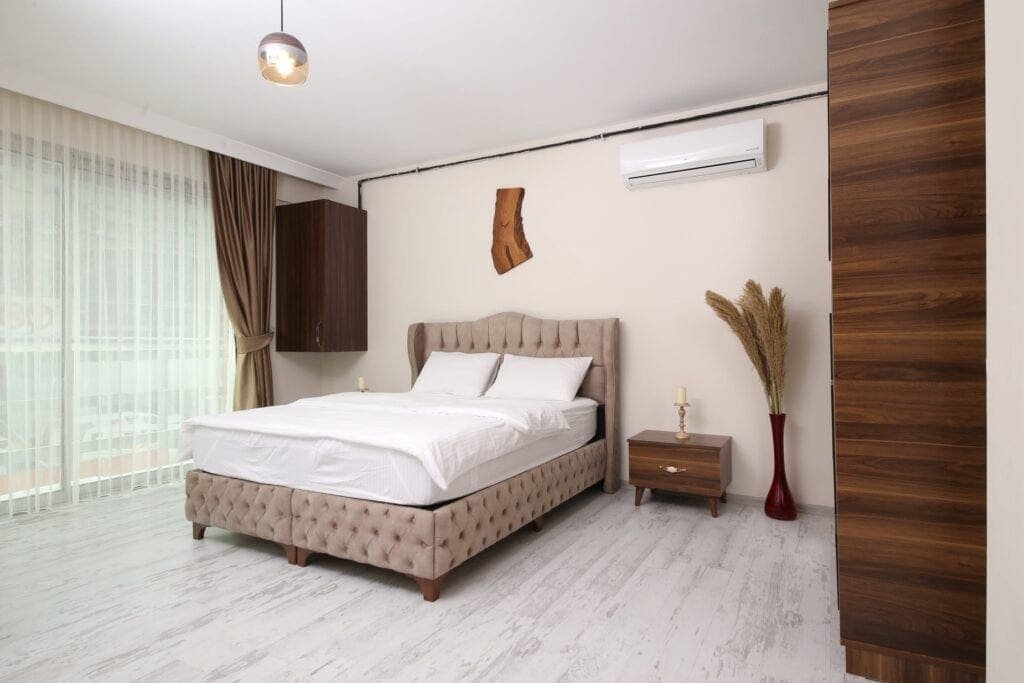
MMPC’s bed bug experts break down some best practices and tips to help you prepare for a successful bed bug treatment.
Article by Joseph Salvatore Knipper from MMPC
How to Prepare for Bed Bug Treatment
Planning to have your home treated for bed bugs?
Preparing for bed bug treatment is one of the most important things tenants and homeowners can do to ensure that your bed bugs are successfully exterminated.
Specific steps and requirements for bed bug preparation vary by the type of treatment and inspection. Here are some general steps you can take to help your exterminator exterminate effectively.
1. Bedrooms
First, remove and inspect any items stored under the bed.
Secondly, strip beds, cots, sleeper sofas, cribs, or any other place you sleep of all sheets and linens and launder appropriately.
Remove mattresses and box springs from the bed frame and place them against the wall. Leave any folding cots, beds, or sleeper sofas open for treatment.
2. Walls and Floors
It’s important that the floor in all areas to be treated is cleared of clutter. In addition to ensuring access for the exterminator, decluttering reduces the number of places bed bugs have to hide.
Remember to vacuum your apartment beforehand. Pay special attention to cloth furniture and get behind baseboards with a crevice tool. After you’re done, immediately empty the vacuum bag, seal it tightly, and dispose of it appropriately.
Although it’s a less common occurrence, you may find bed bugs hidden behind picture frames and mirrors on walls. Be sure to check potential bed bug spots along your walls, and if you find any signs, let your exterminator know.
3. Furniture and Closets
Pull furniture at least two feet away from the walls and baseboards. This will help the exterminator treat those hard-to-reach areas where bed bugs most like to hide.
You’ll want to empty, well, everything, and inspect the items stored therein.
Empty bookcases and inspect books for signs of bed bugs, especially in the spines of hardcovers. Leave books piled in a single area on the floor, but not touching the walls or obstructing any walking paths.
Empty desk drawers and place their contents on the top surface.
Remove all items from your closet floor, closet shelving, and dresser drawers. Anything that can be laundered should be laundered. Sneakers can sometimes tolerate laundering, but shoes that can’t should be left in the apartment for treatment. Keep any suitcases or other luggage open and accessible to the pest control professionals.
In most cases, electronics may be left in the residence, but should be turned off and unplugged. Like everything else, they should be kept off the floor and away from the wall.
4. Pets
Arrange to have your pets vacated for at least 24 hours, including birds and reptiles.
Pet food dishes should be emptied, cleaned, and covered. Pet bedding should be laundered as thoroughly as your own. Fish tanks should also be removed from the premises during service.
5. Laundering
Laundering is one of your best tools against bed bugs. Treat all your laundry as infested; bring it to the laundromat in sealed, biodegradable, plastic bags to protect others.
Anything that can be should be washed in hot water, and then placed in the dryer high for 20-50 minutes in order to bring it above 120-degrees Fahrenheit temperature, which will kill any live bed bugs and bed bug eggs.
Anything that can’t be washed should still be put in the dryer on high or dry cleaned at a facility that specializes in bed bugs. This includes curtains, pillows, bedding, pet bedding, stuffed animals, futon covers, dirty clothes, and clean clothes from your closets and drawers. Newly cleaned items should be sealed and set apart from unlaundered items. Garment storage bags—the type which forms an airtight seal—can be helpful in this process.
You can learn more about laundromat and dry cleaner bed bug precautions here.
6. Kitchens (if applicable)
Remove all items (dishes, glassware, utensils, food, cleaning supplies, etc.) from cabinets and storage areas and place them in sealed bags or containers.
Place all opened food (cereals, crackers, cookies, sugar, flour, spices, canisters, etc.) in the refrigerator or in sealed plastic bags.
Lastly, empty trash and recycling bins, and dispose of paper/plastic grocery/shopping bags from the kitchen area.
7. Bathrooms (if applicable)
Remove all items from medicine cabinets, storage cabinets, drawers, and window sills.
Inspect and place all personal items (toothbrushes, toothpaste, cosmetics, toiletries, medications, etc.) in sealed plastic bags. These bags may be placed in the bathtub.
Bed Bug Treatment: What To Expect Next
On average, most households spend 1 to 3 days preparing for bed bug treatment.
On the day of your bed bug treatment, unless specifically instructed to, don’t bring any items with you when you vacate the premises. Wear only previously laundered clothing removed from sealed bags. The fewer things you bring with you, the less chance that the treatment will miss something.
Approximately two weeks later, a second treatment may be needed to ensure that any bed bug nymphs which hatched since the first treatment are eradicated.
Now that you’ve mastered how to prepare for bed bug treatment, you might also want to consider bed bug-proofing your home to prevent future re-infestation. You can read about what that looks like here.
If you live in New York City or the Tri-State Area, give MMPC a call at (212) 219-8218. We’ll be happy to answer any questions you have and walk you through different options and recommendations.
